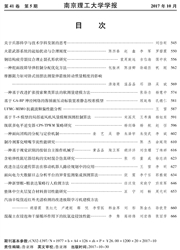

 中文摘要:
中文摘要:
随着协同工作中分布式协同行为的增多,对协同主体之间信息交流和协同控制的要求越来越高。为了解决协同控制中动态、开放、社会性的复杂系统问题,引入了协同Agent的概念。利用协同Agent的信念-愿望-意图体系结构,有效实现了协同过程各阶段的感知、控制功能。此外,还利用言语行为理论扩展知识查询和操作语言通信原语,形式化定义了协同工作特有的言语行为,在通信层面为协同工作提供支持。
 英文摘要:
英文摘要:
To resolve the complex system problem of dynamic, open and social characteristics of collaboration control, the concept of collaborative Agent is introduced. The Belief, Desire and Intention BDI architecture system is used to achieve the awareness and control function in various stages of collaboration process. The knowledge query and manipulation language (KQML) communication primitive is extended with speech-act theory to formally define the proper speech acts in collaboration work, in order to support the collaboration work on the base of communication layer.
 同期刊论文项目
同期刊论文项目
 同项目期刊论文
同项目期刊论文
 期刊信息
期刊信息
